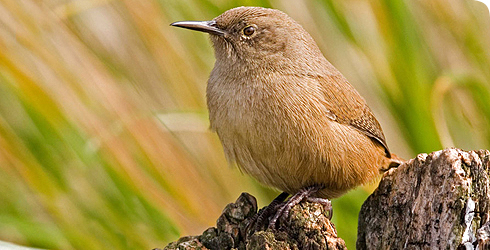Conservation
Conservation status
Classified as ‘Vulnerable’ due to its very small overall range (270km²) and the high susceptibility of islands on which it occurs to invasion by rats.
Threats
Under threat predominantly from the potential introduction of mammalian predators to islands where it breeds. Also threatened by the loss of its natural tussac habitat by burning and livestock grazing.
It cannot survive on islands in the presence of rats, but may co-exist with a few domestic cats on larger islands. However, feral cats and rats have probably already destroyed whole populations.
Trends
Population currently thought to be stable.
Management
Rat eradication on suitable islands is the most important conservation strategy.
